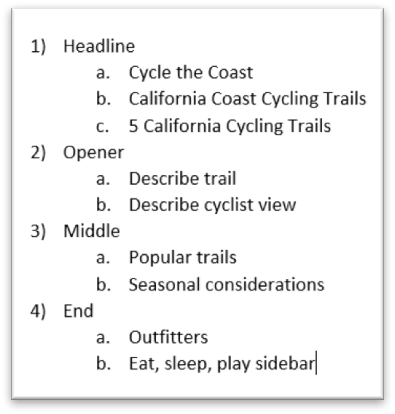
I use my best stall tactics. Another cup of tea… an email check every 15 minutes… a catch-up on social media… phone calls… laundry… naps… All the while saying, “Mary, just start writing already.” That’s when I know I have it: writer’s block.
If you’re having this problem, you’re in good company. New Yorker magazine author Joseph Mitchell suffered for years with “blank page syndrome.” Charles Schultz often ran out of ideas for Charlie Brown. Norman Mailer, Maya Angelou, Ernest Hemingway, and many others couldn’t face the unnerving blank page at times.
Writer’s block can happen for countless reasons. For me, it often comes when I have no solid story plan, when I haven’t done enough research, or when I’m not inspired by the subject. Most often, though, it’s when my non-writer’s life is driving me nuts and demanding my attention.
No matter what caused your writer’s block, you can tear that wall down, block by block. Here are four sure-fire ways to beat writer’s block and help your inner writer wake up and get back to work.
1. Clear your schedule for one hour
Give yourself one hour to let go of everything, including the story you can’t seem to write. Give yourself permission not to worry about anything for that hour. Do what you like, but don’t try to write. Don’t even think about writing.
Take a nap, get a massage, meditate, read fiction, stare into space, paint, sculpt. Do something that relaxes you or makes you smile, or do nothing at all. For me, a walk on the California Coastal Trail in my front yard is how I clear my deck.
After an hour of resting my brain, I usually return to the keyboard energized and ready to go. If not, I move on to step 2.
2. Make an outline
Even for short articles or blog posts, outlines can help sort out your thoughts. Start your outline with the names of each story component:
- Headline
- Opening
- Middle
- End
Next, add subsections to each section. For example, under the headline, your subcategories would be headline ideas.
Brainstorm. Don’t be judgmental, because that will block your creativity. Type the first things that come to mind and even let yourself get a little silly. Laughter is a great icebreaker. Keep at it, filling in more and more information and ideas.
Here’s an example of what your outline might look like:
If this doesn’t break the block, move on to step 3.
3. Revisit your subject
Writer’s block can attack when you don’t have enough information. When I realize that’s why I’m stalling, I revisit my subject. This could include research done in person, or via websites, email, or over the phone. Do whatever works best for you under the circumstances.
Did you pitch the story? Re-read your query—especially if it’s been a while since you got the assignment.
Revisit the actual place in your mind. Close your eyes. See yourself at the location. Remember the sounds, conversation, taste, people, music, the color of the water, etc. I’ve written more story-openers this way than any other. I call it a “road trip in my mind.”
4. Review your photos
I’m amazed at how many new inspirations and ideas I get from looking at my photos. So often, I see something I forgot about or didn’t notice on the ground.
As Rod Stewart says, “Every picture tells a story, don’t it?”
Writer’s block is generally short-lived for most of us. So, if you find yourself staring at the keyboard hopelessly, don’t lose hope. Try my suggestions for breaking those blocks and getting back to work.

